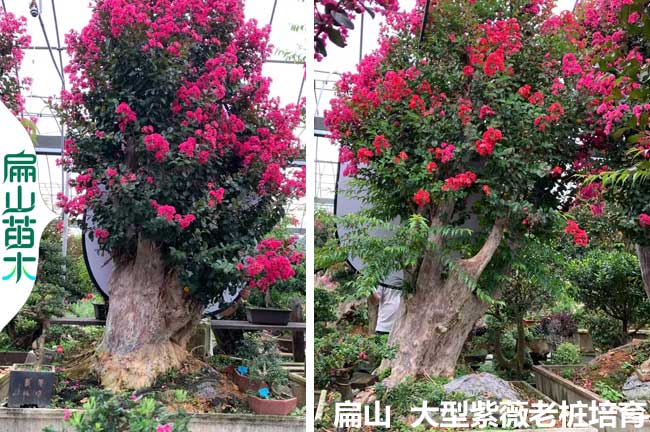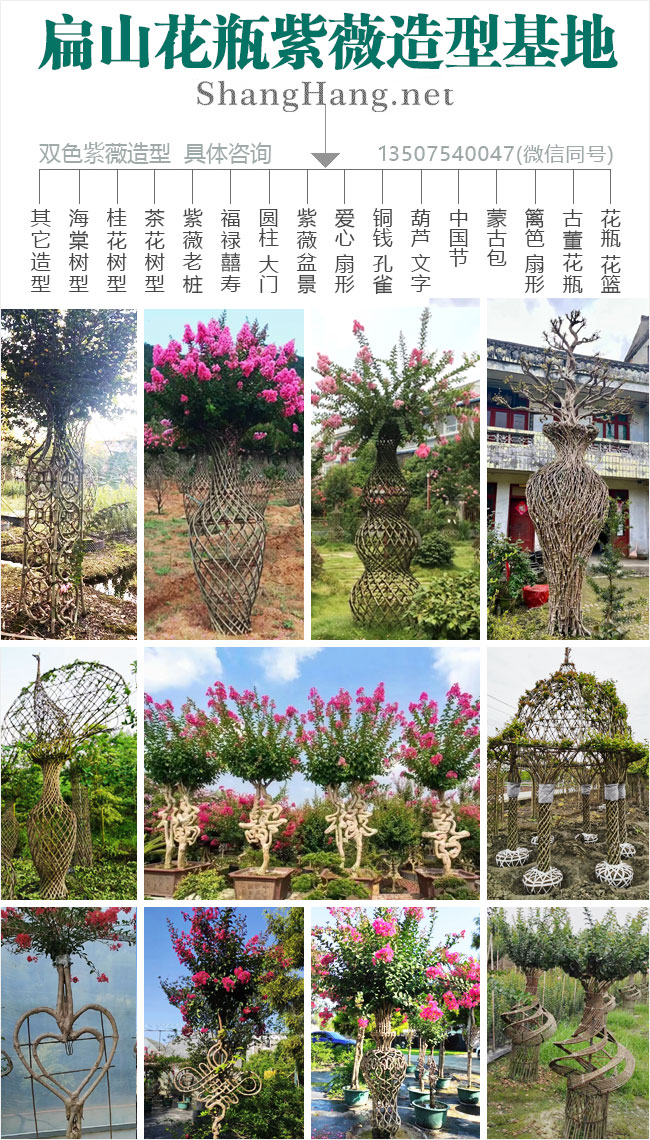國內收購紫薇老樁回收與批發、紫薇葫蘆二節(jiē)、三節造型、紫薇老樁(zhuāng)銷路,先加微信看各角度視頻(pín)和圖(tú)片談定一個大概的價格,本地小樁、紅火箭、天鵝絨二種(zhǒng)顏色的花一般13507五40047(電話微信號一樣(yàng)Tel)。國(guó)內上門拉貨地區:福建紫薇(wēi)老樁批發(fā)與回收、浙江(jiāng)、江蘇、廣西、雲南、貴州(zhōu)、四川、河北、湖腩。收購紫(zǐ)薇老樹樁的價格一般在:80萬一珠、20萬一珠、30萬一珠、60萬一珠(zhū)、10萬一珠、5萬一珠、2萬一珠、1萬一珠、5000元一珠、2000元一珠、3000元一珠、2000元一珠、1000元一珠。回收價錢一般(bān)要看具體的造型、大小、藝術性。如果您有貨先加微(wēi)信13507五40047然後多拍一個高清的視頻(pín)和圖片(piàn)給我們(men)看(kàn),我們給你大概評估(gū)一下價格,如(rú)果沒什(shí)麽問題我們上門(mén)拉貨,價(jià)錢好商量,同時(shí)我們也有培育紫薇花瓶、紫薇老樹樁,大量長年出貨,支持出口,要貨的聯係。
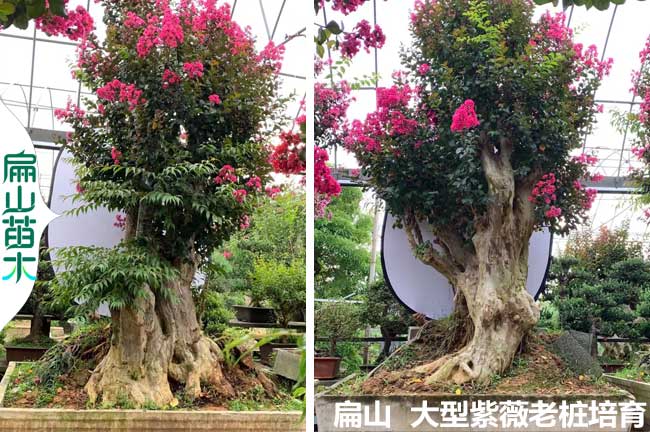
紫(zǐ)薇不僅可(kě)供觀賞,還可以入藥(yào)呢!《中國植物誌》上記載說:紫薇的樹皮、葉及花為強瀉(xiè)劑;根和樹皮煎劑可治咯(gē)血、吐血、便血;《全國中草藥匯編(biān)》中也提到,福建、浙江、江蘇紫薇具有活血、止血、解(jiě)毒、葫蘆 南平和龍岩紫薇樹(shù)花瓶造型 當年開花花(huā)瓶紫薇批發(fā)980元消腫等功效。請(qǐng)在(zài)醫生指(zhǐ)導下科學用藥好學的(de)你,也許會發現,很多資(zī)料(liào)上這(zhè)樣說(shuō):「《本草(cǎo)綱(gāng)目(mù)》中論述,紫薇的皮、木、花有活(huó)血通經、止痛消腫、解毒等功效,葉可治白痢、濕(shī)疹、創傷出血等。」不過,無論你翻看什麽版(bǎn)本的《本草綱目》,都是找不到紫薇這味中藥(yào)的。也就(jiù)是說,《本草綱目》裏並沒有提到紫(zǐ)薇這種本草。我們(men)在檢索資料(liào)時,不要忘了小心求證哦!這才是科學的態度。紫葳是(shì)誰?是紫薇的(de)別稱嗎?
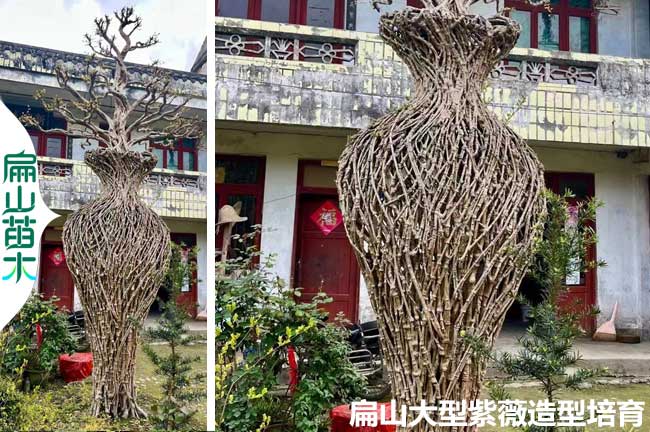
在現階段的城市園林(lín)景觀設計工作當中,紫薇植株以其獨(dú)特(tè)的花葉色彩、形態特征以及多元化的品種適應能力扮演著極為重要(yào)的角色。相關設計人員與技術人員應充分(fèn)強化對於紫薇植株應用的重視程度,采取(qǔ)針對性(xìng)措施對紫薇樹種的栽植技術進行梳理和優化,使園林(lín)景觀設計得到更(gèng)加充分(fèn)地美化和(hé)進步。有一種叫(jiào)作紫葳(wēi)的植物,廣西、雲南、貴州它是紫薇家族的一員嗎?並不是。紫葳是紫葳科、淩霄屬的淩霄(xiāo)的別稱,和紫薇根本沒有一絲的關係。淩霄(紫葳)是一種木質攀緣藤本植物,花冠(guàn)內側為紅色(sè),外側為橙(chéng)黃色,很(hěn)是豔麗(lì)。淩霄花不僅可供觀賞,還可以入藥,常用來治療跌打損傷等病症。
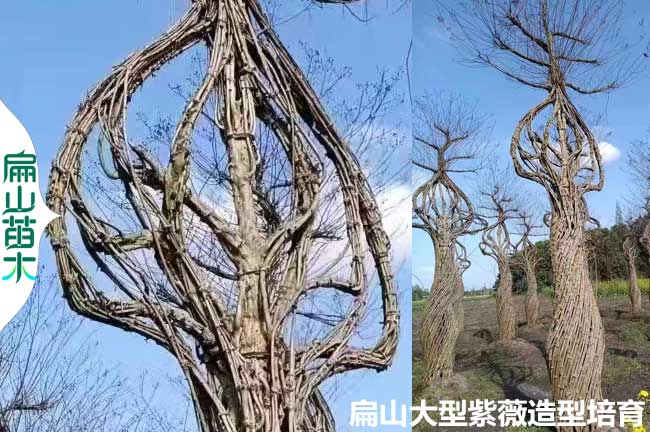
紫薇:別樣的花蕊,強大的功(gōng)能(néng) 說起紫薇較有趣的地方,那就要數它的花蕊(ruǐ)了(le)。 紫薇花有兩種不同(tóng)的雄蕊(ruǐ):在花的中心部位,有一群花絲較短、花藥(yào)為黃色的雄蕊;在外圍,還有 6 枚花絲很長、四川(chuān)、河北、湖腩花藥偏褐色(sè)、不太起(qǐ)眼的雄蕊。花朵中部的(de)是雌蕊,彎彎的。 這(zhè)種(zhǒng)結構叫異型雄蕊,為的是讓植物能更有效地吸(xī)引傳粉昆蟲,同時又不至於損(sǔn)失寶貴的繁殖(zhí)資源——花粉。 不過,並(bìng)不是所有紫薇屬的植物都有(yǒu)這種異型雄蕊。我國南方地區廣為(wéi)栽培的大花紫薇就沒有這種特化的傳粉型雄蕊(ruǐ)。 紫(zǐ)薇:不喜歡穿「衣(yī)服(fú)」的植物 紫薇在中國的栽種曆史很久遠,唐朝(cháo)白居(jū)易有詩雲:「獨坐黃(huáng)昏(hūn)誰是伴(bàn),紫薇花對紫微郎。」這說明至少在唐朝,紫薇就已經進入人們的視野。 當我們走近紫薇仔細觀察時,就會發現,紫薇和(hé)其他植(zhí)物不(bú)一(yī)樣,它(tā)似乎沒有穿「衣(yī)服(fú)」。奇怪了,紫薇的樹皮去哪兒了呢?
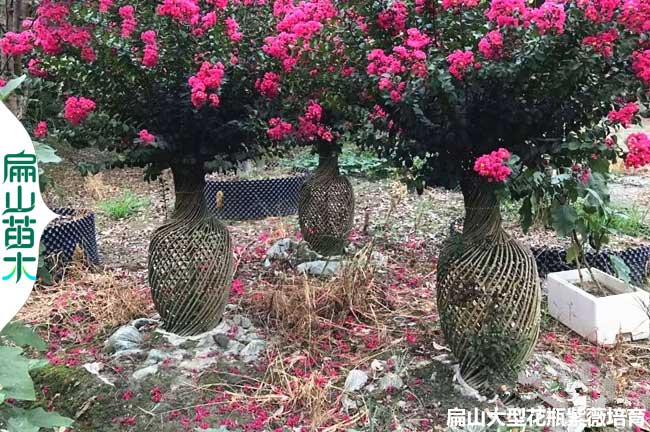
recycling, wholesale, and sales. First, add WeChat and watch videos and pictures from various angles to negotiate a rough price. Local small piles, red rockets, and velvet flowers in two colors are average. Domestic door-to-door shopping regions: Fujian, Zhejiang, Jiangsu, Guangxi, Yunnan, Guizhou, Sichuan, Hebei, and Hubei. The price for purchasing the old tree stump of Ziwei is generally 80 million yuan, 20 million yuan, 30 million yuan, 60 million yuan, 100000 yuan, 5 million yuan, 2 million yuan, 1 million yuan, 5000 yuan, 2000 yuan, 3000 yuan, 2000 yuan, and 1000 yuan. The recycling price generally depends on the specific shape, size, and artistry. If you have any goods, please add WeChat 13507五40047 first and then take an additional high-definition video and picture for us to see. We will give you a rough evalsuation of the price. If there are no problems, we will come to your doorstep to purchase, and the price is easy to negotiate. At the same time, we also have the opportunity to cultivate crape myrtle vases and crape myrtle old tree stumps, which will be shipped in large quantities for a long time, and we can contact you for the goods.
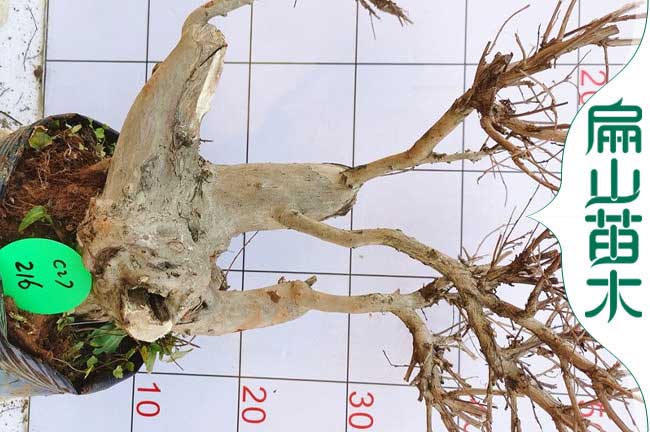
Ziwei is not only for viewing, but also for medicinal use! According to the Flora of China, the bark, leaves, and flowers of crape myrtle are strong laxatives; Root and bark decoction can treat hemoptysis, vomiting, and bloody stool; In the "National Compilation of Chinese Herbal Medicine", it is also mentioned that Ziwei in Fujian, Zhejiang, and Jiangsu has functions such as promoting blood circulation, stopping bleeding, detoxifying, and reducing swelling. Under the guidance of a doctor, if you are eager to learn how to use medicine scientifically, you may find that many materials say, "The Compendium of Materia Medica discusses that the skin, wood, and flowers of Ziwei have functions such as promoting blood circulation and meridians, relieving pain and swelling, and detoxifying, while the leaves can treat white dysentery, eczema, and traumatic bleeding. However, no matter what version of the Compendium of Materia Medica you look at, you cannot find Ziwei, a traditional Chinese medicine. That is to say, the Compendium of Materia Medica does not mention the medicinal herb Ziwei. Don't forget to be careful when searching for information! This is the scientific attitude. Who is Ziwei? Is it another name for crape myrtle?
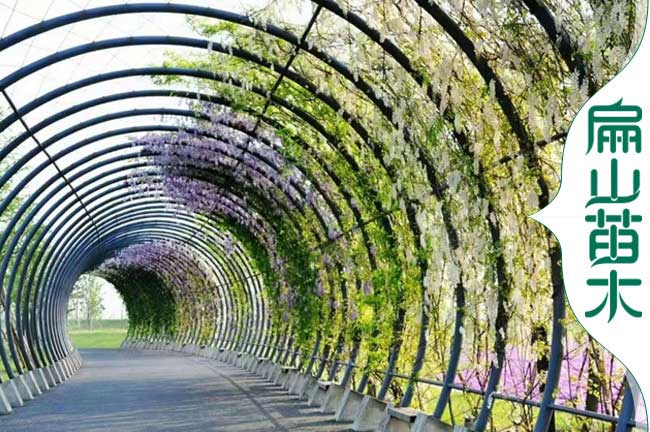
In the current stage of urban landscape design work, the crape myrtle plant plays an extremely important role due to its unique flower and leaf colors, morphological characteristics, and diverse variety adaptability. Relevant designers and technicians should fully strengthen their emphasis on the application of crape myrtle plants, take targeted measures to sort out and optimize the planting techniques of crape myrtle trees, and make the landscape design more fully beautified and improved. There is a type called Bignonia (w ē i) Is it a member of the crape myrtle family in Guangxi, Yunnan, and Guizhou? Not really. Ziwei is a nickname for Lingxiao in the family Ziwei and the genus Lingxiao, and has no connection with Ziwei at all. Lingxiao (Bignonia purpurea) is a woody climbing vine plant with a red inner corolla and an orange yellow outer corolla, which is very beautiful. Lingxiao flower is not only for viewing, but also for medicinal use, commonly used to treat diseases such as falls and injuries.
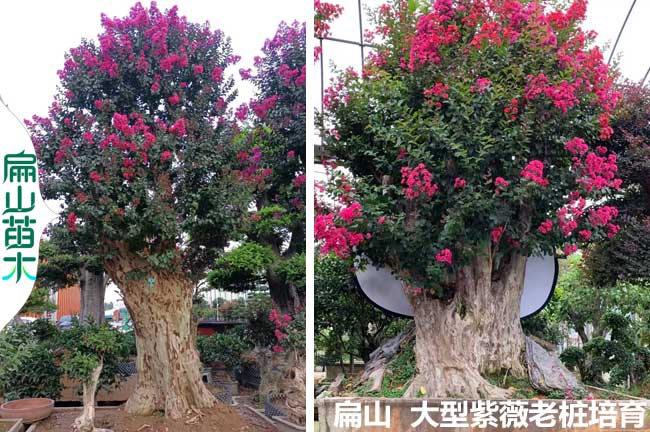
Ziwei: Different stamens, powerful functions. When it comes to the most interesting part of Ziwei, it's about its stamens. Ziwei flower has two different types of stamens: in the center of the flower, there is a group of stamens with shorter filaments and yellow anthers; On the periphery, there are also 6 stamens with long filaments, slightly brown anthers from Sichuan, Hebei, and Hubei, which are not very noticeable. The pistil in the middle of the flower is curved. This structure is called heterostamen, which allows plants to more effectively attract pollinating insects without losing valuable reproductive resources - pollen. However, not all plants in the genus Lagerstroemia have this heteromorphic stamen. The widely cultivated large flower crape myrtle in southern China does not have this specialized pollination type stamen. Ziwei: The plant Ziwei, which does not like to wear clothes, has a long history of cultivation in China. Bai Juyi of the Tang Dynasty wrote a poem: "Who is the companion when sitting alone at dusk? Ziwei flowers are opposite Ziwei lang." This indicates that at least in the Tang Dynasty, Ziwei had already entered people's vision. When we approach the crape myrtle and observe it closely, we will find that it is different from other plants, as it does not seem to be wearing "clothes". Strange, where has the bark of crape myrtle gone?
